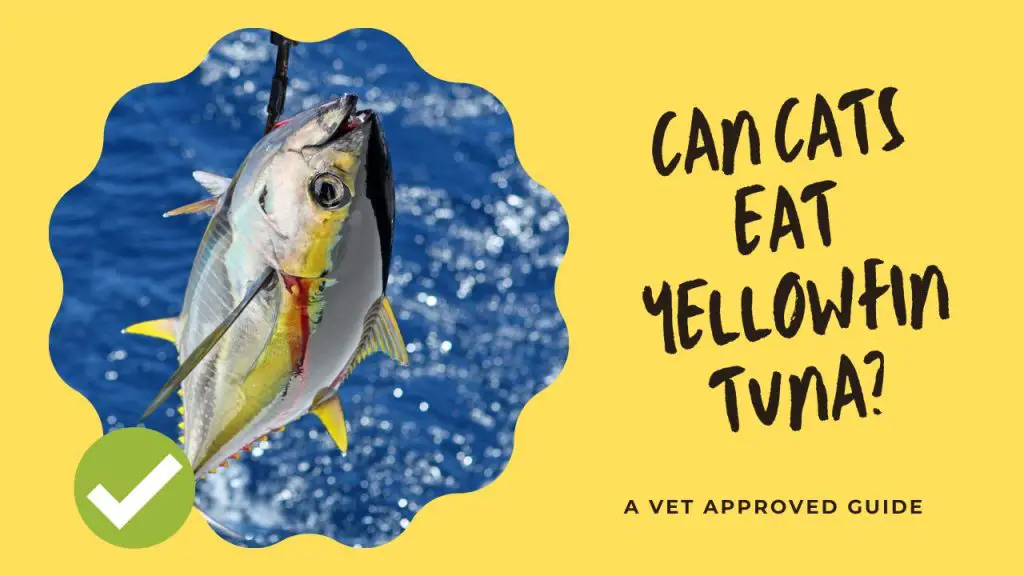You may have heard different opinions, but the truth is yes! Yellowfin tuna can be great for your kitty’s diet – if eaten in moderation.
Tuna is a great source of protein and omega-3 fatty acids. It should not replace a balanced diet. Yellowfin tuna should be cooked and should have no seasonings or additives.
Raw or undercooked fish can contain bacteria and parasites, which can cause health problems. Cut tuna into small pieces and mix it with other food to avoid blockages.
What is Yellowfin Tuna?
Yellowfin Tuna is a type of tuna that lives in tropical and subtropical waters. It’s known for its mild flavor, firm texture, and yellow color.
Cats can eat yellowfin tuna, if it’s cooked right. It’s high in protein and people often give it as a treat. But it should not be their main food source. Mercury poisoning and other health problems could occur.
To stay safe, check your cat’s tuna intake. Keep it to a minimum. If unsure, talk to a vet to get a well-balanced diet for your cat.
Nutritional Value of Yellowfin Tuna
| Nutrient | Amount per 100 grams | % Daily Value* |
|---|---|---|
| Calories | 130 | – |
| Total Fat | 0.6 g | 0% |
| Saturated Fat | 0.2 g | 1% |
| Trans Fat | 0 g | – |
| Cholesterol | 47 mg | 15% |
| Sodium | 54 mg | 2% |
| Potassium | 527 mg | 15% |
| Total Carbohydrate | 0 g | 0% |
| Dietary Fiber | 0 g | 0% |
| Sugar | 0 g | – |
| Protein | 29 g | 58% |
| Vitamin C | – | 0% |
| Calcium | – | 0% |
| Iron | – | 4% |
| Vitamin D | – | 20% |
| Vitamin B6 | – | 50% |
| Cobalamin | – | 40% |
| Magnesium | – | 10% |
Benefits of Feeding Cats Yellowfin Tuna
Yellowfin tuna can be a good choice for your cat’s diet. It has several benefits.
- Protein in yellowfin tuna helps build and maintain muscles.
- It also contains essential amino acids, fatty acids, and vitamins D and B12. This help keep skin and coat, bones, and teeth healthy.
- Feed yellowfin tuna carefully. Choose high-quality, fresh cuts with no additives or preservatives.
- Too much mercury can be dangerous for cats.
- You can give cooked or canned yellowfin tuna as a treat.
- Do not replace all their food with it.
- Ask your vet before giving human food to your cat.
Risks of Feeding Cats Yellowfin Tuna
Feeding cats Yellowfin Tuna can be dangerous. It has high levels of mercury, which can cause mercury poisoning. Symptoms are hair loss, weight loss, and hyperactivity. Plus, it can give cats digestive issues like vomiting, diarrhea, and no appetite.
It’s better to feed cats a balanced diet with different proteins. If you want to give them fish, try low-mercury sardines or salmon. But, only in moderation!
In what quantities should yellowfin tuna be fed to cats, and how often can it be included in their diet without causing harm?
Cats may consume tuna moderately, yet it must not constitute most of their daily intake. Yellowfin tuna, specifically, is a more secure choice compared to other tuna varieties.
Occasionally offering your cat tuna as a reward is acceptable; however, excessive amounts or high frequency can result in health complications.
Keep in mind that a cat’s natural diet includes the entire animal; therefore, providing only meat or fish pieces lacks nutritional balance.
Pro Tip: Don’t feed your cat raw tuna. It has bad bacteria and parasites.
Are there any specific preparation or cooking methods that should be used when feeding yellowfin tuna to cats?
Here are tips for safe feeding:
- Cook the tuna. Raw can have parasites and bacteria.
- No bones or fat.
- Don’t give tuna packed in oil. Too much oil can cause digestive issues.
- Limit the amount to avoid mercury exposure.
Albacore Tuna vs. Yellowfin Tuna: What’s the Difference for Cats?
Regarding cat feeding with tuna, pet owners must be cautious about the tuna variety offered. Albacore and Yellowfin Tuna are two favored kinds, but with notable differences.
Albacore is smaller than Yellowfin Tuna, has a lengthy pelvic fin, and is known as “Longfin.” Its color is significantly white, contrasting with Yellowfin’s reddish tint.
In contrast, Yellowfin is larger than Albacore and has a coarser texture but maintains an enjoyable taste.
Regardless of these distinctions, pet owners should not give cats tuna frequently, as human-grade tuna may contain elevated mercury levels and many cats have fish allergies, leading to vomiting and itchiness.
Chunk-light tuna is preferable for cats over Albacore, but pet owners must remain vigilant about other tuna sources their pets ingest.
Conclusion
Finally, while cats can have yellowfin tuna occasionally, it’s not the best choice for their daily diet. Here’s what to remember:
- Only give your cat human food, including tuna, now and then, and only a bit.
- Tuna is missing key nutrients that cats need, such as taurine. This could cause nutrition issues in the long run.
- Canned tuna often has too much salt and preservatives, which can be bad for cats.
If you do decide to offer your cat yellowfin tuna as a treat, make sure to take off any bones and skin, and give only a little. Always speak to your veterinarian before changing your cat’s diet significantly.







